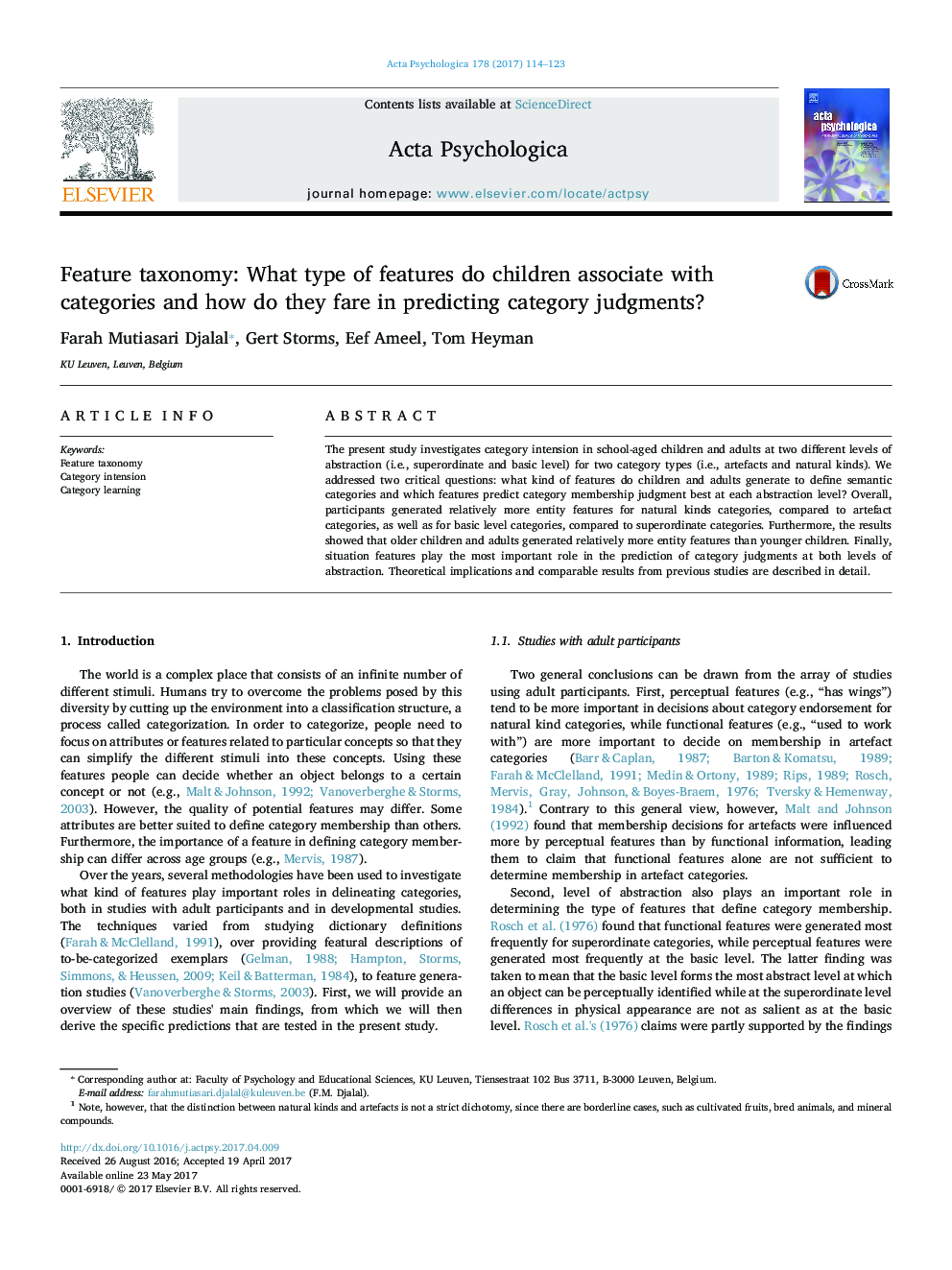| Article ID | Journal | Published Year | Pages | File Type |
|---|---|---|---|---|
| 5040303 | Acta Psychologica | 2017 | 10 Pages |
â¢Participants predominately produced entity and situation features.â¢People generate relatively more entity features for natural kinds than for artefacts.â¢The same is true for basic level categories versus superordinate categories.â¢Adults generate relatively more entity features than children do.â¢Situation properties play the most important role in predicting category judgments.
The present study investigates category intension in school-aged children and adults at two different levels of abstraction (i.e., superordinate and basic level) for two category types (i.e., artefacts and natural kinds). We addressed two critical questions: what kind of features do children and adults generate to define semantic categories and which features predict category membership judgment best at each abstraction level? Overall, participants generated relatively more entity features for natural kinds categories, compared to artefact categories, as well as for basic level categories, compared to superordinate categories. Furthermore, the results showed that older children and adults generated relatively more entity features than younger children. Finally, situation features play the most important role in the prediction of category judgments at both levels of abstraction. Theoretical implications and comparable results from previous studies are described in detail.
